Thebryanscout - 𝕭𝖗𝖞𝖆𝖓!

More Posts from Thebryanscout and Others

*It’s

“Future Monument Valley” by Gary Tonge.
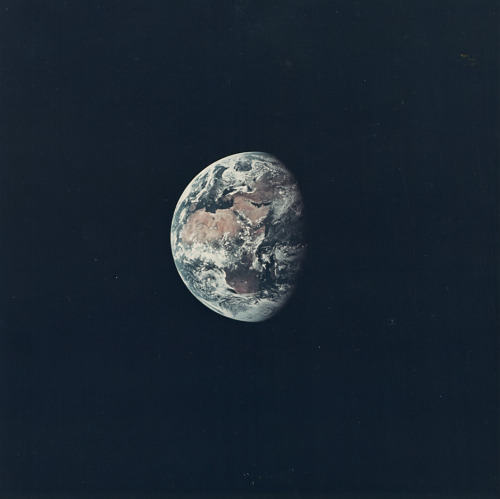
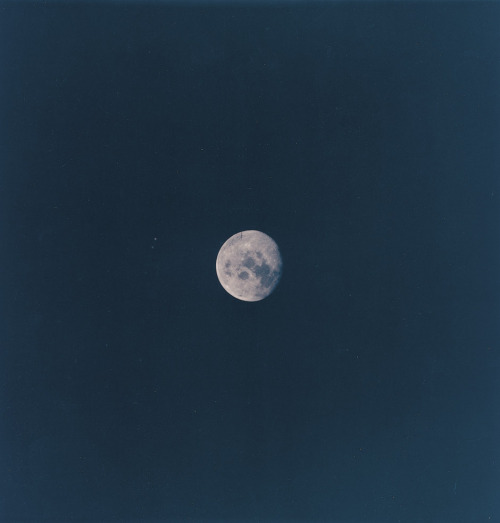
View of the earth and the moon from Apollo 13, 1970. Vintage chromogenic print on Kodak paper. Photography: NASA. Via Bassenge
‘Doctor Who’ series 1-9 in chronological order

The complete aesthetic of this blog.
4 people are living in an isolated habitat for 30 days. Why? Science!
This 30 day mission will help our researchers learn how isolation and close quarters affect individual and group behavior. This study at our Johnson Space Center prepares us for long duration space missions, like a trip to an asteroid or even to Mars.

The Human Research Exploration Analog (HERA) that the crew members will be living in is one compact, science-making house. But unlike in a normal house, these inhabitants won’t go outside for 30 days. Their communication with the rest of planet Earth will also be very limited, and they won’t have any access to internet. So no checking social media kids!
The only people they will talk with regularly are mission control and each other.

The crew member selection process is based on a number of criteria, including the same criteria for astronaut selection.
What will they be doing?
Because this mission simulates a 715-day journey to a Near-Earth asteroid, the four crew members will complete activities similar to what would happen during an outbound transit, on location at the asteroid, and the return transit phases of a mission (just in a bit of an accelerated timeframe). This simulation means that even when communicating with mission control, there will be a delay on all communications ranging from 1 to 10 minutes each way. The crew will also perform virtual spacewalk missions once they reach their destination, where they will inspect the asteroid and collect samples from it.
A few other details:
The crew follows a timeline that is similar to one used for the ISS crew.
They work 16 hours a day, Monday through Friday. This includes time for daily planning, conferences, meals and exercises.
They will be growing and taking care of plants and brine shrimp, which they will analyze and document.
But beware! While we do all we can to avoid crises during missions, crews need to be able to respond in the event of an emergency. The HERA crew will conduct a couple of emergency scenario simulations, including one that will require them to maneuver through a debris field during the Earth-bound phase of the mission.

Throughout the mission, researchers will gather information about cohabitation, teamwork, team cohesion, mood, performance and overall well-being. The crew members will be tracked by numerous devices that each capture different types of data.

Past HERA crew members wore a sensor that recorded heart rate, distance, motion and sound intensity. When crew members were working together, the sensor would also record their proximity as well, helping investigators learn about team cohesion.
Researchers also learned about how crew members react to stress by recording and analyzing verbal interactions and by analyzing “markers” in blood and saliva samples.

In total, this mission will include 19 individual investigations across key human research elements. From psychological to physiological experiments, the crew members will help prepare us for future missions.
Want a full, 360 look at HERA? You can check out the inside of the habitat in our new Facebook display: [LINK TBD]
Make sure to follow us on Tumblr for your regular dose of space: http://nasa.tumblr.com

Chewie was finally talked into going to a stylist. Looking good, big guy.

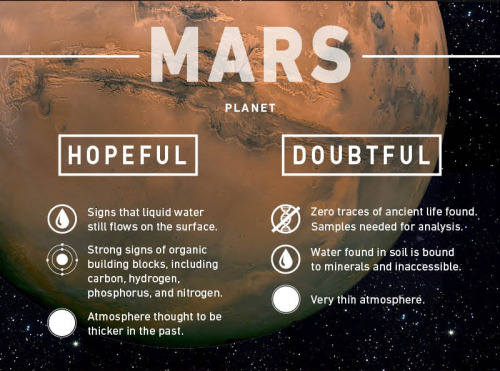
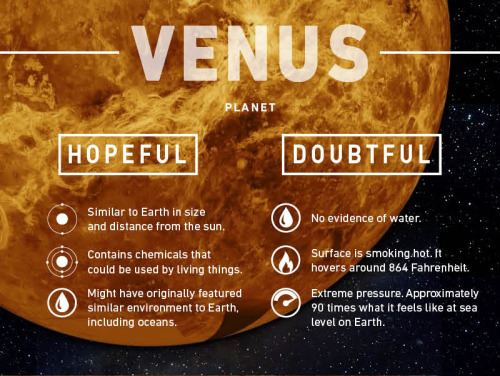
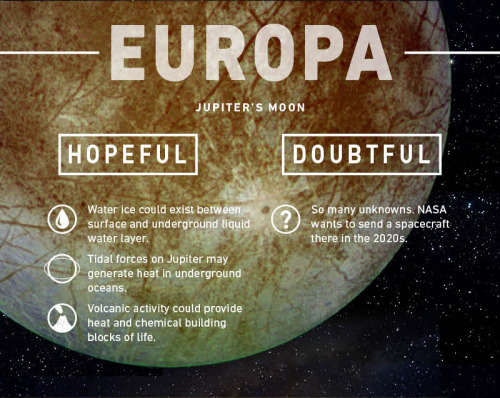
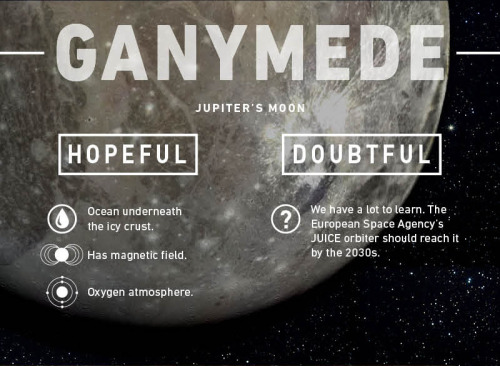



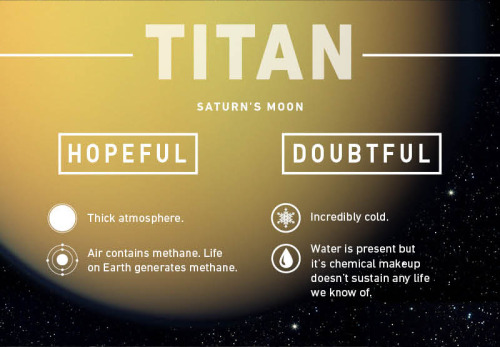
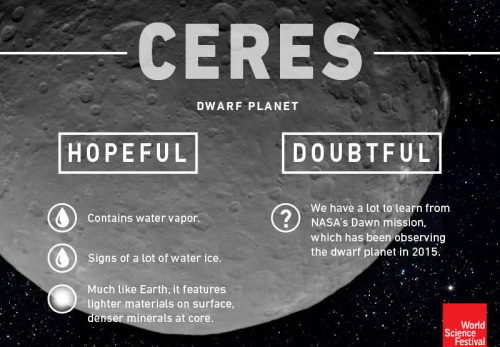
Where Could Life Exist?
When NASA scientists announced earlier this year that they had found evidence of liquid water on Mars, imaginations ran wild with the possibility that life could exist somewhere other than here on Earth.
Scientists continue to explore the possibility that Mars once looked a lot like Earth — salty oceans, fresh water lakes, and a water cycle to go with it. That’s exciting stuff.
So where else are they looking? What exactly are they looking for?
There are nine places in our universe where scientists say life is a possibility. The locations range from a smoking hot planet like Venus to a moon that orbits Saturn called Enceladus, which looks a lot like a massive, tightly-packed ball of ice.
All of these places show signs that water is, or at least was, a possibility. They also appear to feature some kind of energy that could produce heat.
full resolution

Soylent Green is people!

Do not eat Soylent Green!
A movie with a message that was ahead of its time.
-
 gdtmnet reblogged this · 9 years ago
gdtmnet reblogged this · 9 years ago -
 oneil2020-blog reblogged this · 9 years ago
oneil2020-blog reblogged this · 9 years ago -
 innertyrantinfluencer reblogged this · 9 years ago
innertyrantinfluencer reblogged this · 9 years ago -
 innertyrantinfluencer liked this · 9 years ago
innertyrantinfluencer liked this · 9 years ago -
 robbysawicki reblogged this · 9 years ago
robbysawicki reblogged this · 9 years ago -
 komatcu liked this · 9 years ago
komatcu liked this · 9 years ago -
 reddog1984 liked this · 9 years ago
reddog1984 liked this · 9 years ago -
 humanities-wake reblogged this · 9 years ago
humanities-wake reblogged this · 9 years ago -
 opadillazayas liked this · 9 years ago
opadillazayas liked this · 9 years ago -
 lah-belle liked this · 9 years ago
lah-belle liked this · 9 years ago -
 smokesandyou reblogged this · 9 years ago
smokesandyou reblogged this · 9 years ago -
 arcusregime reblogged this · 9 years ago
arcusregime reblogged this · 9 years ago -
 vtassara-blog reblogged this · 9 years ago
vtassara-blog reblogged this · 9 years ago -
 vtassara-blog liked this · 9 years ago
vtassara-blog liked this · 9 years ago -
 heyguysman liked this · 9 years ago
heyguysman liked this · 9 years ago -
 wyatt-the-wolf-rayet reblogged this · 9 years ago
wyatt-the-wolf-rayet reblogged this · 9 years ago -
 thirdman000 reblogged this · 9 years ago
thirdman000 reblogged this · 9 years ago -
 humanities-wake liked this · 9 years ago
humanities-wake liked this · 9 years ago -
 mahtumbee liked this · 9 years ago
mahtumbee liked this · 9 years ago -
 robertissecretlyadragon liked this · 9 years ago
robertissecretlyadragon liked this · 9 years ago -
 quarckseverywhere reblogged this · 9 years ago
quarckseverywhere reblogged this · 9 years ago -
 danthemancallahan92 reblogged this · 9 years ago
danthemancallahan92 reblogged this · 9 years ago -
 darkraven71-blog liked this · 9 years ago
darkraven71-blog liked this · 9 years ago -
 free-space-with-purchase-of-time reblogged this · 9 years ago
free-space-with-purchase-of-time reblogged this · 9 years ago -
 dani-pants liked this · 9 years ago
dani-pants liked this · 9 years ago -
 angeexx3 liked this · 9 years ago
angeexx3 liked this · 9 years ago -
 iruka-2013 liked this · 9 years ago
iruka-2013 liked this · 9 years ago -
 magnetic-terp-input reblogged this · 9 years ago
magnetic-terp-input reblogged this · 9 years ago -
 matthomas95 reblogged this · 9 years ago
matthomas95 reblogged this · 9 years ago -
 titorendon reblogged this · 9 years ago
titorendon reblogged this · 9 years ago -
 coffeepotastronaut reblogged this · 9 years ago
coffeepotastronaut reblogged this · 9 years ago -
 coffeepotastronaut liked this · 9 years ago
coffeepotastronaut liked this · 9 years ago -
 mk301 liked this · 9 years ago
mk301 liked this · 9 years ago -
 shembolstudio liked this · 9 years ago
shembolstudio liked this · 9 years ago -
 howdyzukkahere liked this · 9 years ago
howdyzukkahere liked this · 9 years ago -
 1701daleks reblogged this · 9 years ago
1701daleks reblogged this · 9 years ago -
 caviriot liked this · 9 years ago
caviriot liked this · 9 years ago -
 bisexualtrenchcoats liked this · 9 years ago
bisexualtrenchcoats liked this · 9 years ago -
 makeup-yuliana-blog liked this · 9 years ago
makeup-yuliana-blog liked this · 9 years ago -
 real-rocknrolla liked this · 9 years ago
real-rocknrolla liked this · 9 years ago -
 tuhopolttopallo reblogged this · 9 years ago
tuhopolttopallo reblogged this · 9 years ago
21, He/Him/His, lover of all things space, aviation, alt music, film, and anime
255 posts